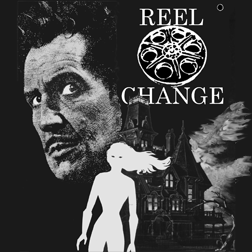 |
 |
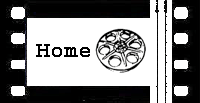 |
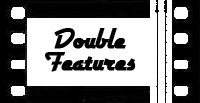 |
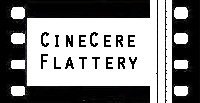 |
 |
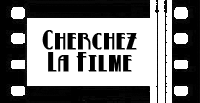 |
 |
 |

On Remakes and Grave Robbing
Necromancing the Shown
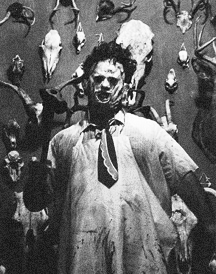 The
remake is the cowardly retreat of the hack. The hack fears nothing more
so than being outed for not having an original idea in his head. The remake,
the reuse of a title and concept, protects the hack from that fate. When
Wrong Turn came out earlier this year, most reviewers ignored taut
scares, solid gore, and an incredible set piece climax to focus on its
influences. It was called a rip-off of The Hills Have Eyes and
Texas Chain Saw Massacre. Yet when the studio whores out the title
and concept of Chain Saw, one of the greatest horror films of all
time, all the reviews can do is say, "Well, it's such a gentle rape
it's almost like making love." and "Hey! She was asking for
it, at least they didn't bang her in the ass."
The
remake is the cowardly retreat of the hack. The hack fears nothing more
so than being outed for not having an original idea in his head. The remake,
the reuse of a title and concept, protects the hack from that fate. When
Wrong Turn came out earlier this year, most reviewers ignored taut
scares, solid gore, and an incredible set piece climax to focus on its
influences. It was called a rip-off of The Hills Have Eyes and
Texas Chain Saw Massacre. Yet when the studio whores out the title
and concept of Chain Saw, one of the greatest horror films of all
time, all the reviews can do is say, "Well, it's such a gentle rape
it's almost like making love." and "Hey! She was asking for
it, at least they didn't bang her in the ass."
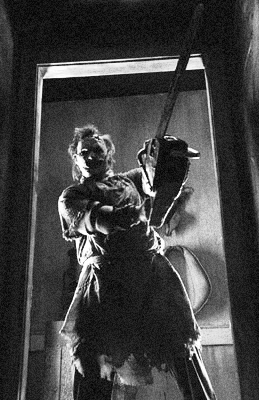 Remakers
can hide from the reviewers in one of two ways, and these days with fewer
and fewer literate, knowledgeable critics - not to mention the ones that
are either directly or indirectly owned by the industry - the filmmakers
don't even have to do the work of hiding. Often the reviews protect them
right up front. They may take the "aw shucks" stance, saying,
of course they got bad reviews because they could never live up to the
reputation of the original. By saying this, they now cut off any argument
of comparison. If there's no way you could have lived up to the original
it seems that it would be a hell of a lot cheaper to just release the
original.
Remakers
can hide from the reviewers in one of two ways, and these days with fewer
and fewer literate, knowledgeable critics - not to mention the ones that
are either directly or indirectly owned by the industry - the filmmakers
don't even have to do the work of hiding. Often the reviews protect them
right up front. They may take the "aw shucks" stance, saying,
of course they got bad reviews because they could never live up to the
reputation of the original. By saying this, they now cut off any argument
of comparison. If there's no way you could have lived up to the original
it seems that it would be a hell of a lot cheaper to just release the
original.
The other strategy is similar, but such a deceptively simple defense that it often goes unnoticed. It is to once again say that they two different entities and there's no way to compare the two pictures. Therefore one should forget the original ever existed when the judging the remake. While many feel this to be fair, it ignores the fact that this gives the remake the upper hand in comparison to other genre-mates.
Pictures like Rob Zombie's House of 1,000 Corpses endure endless slams about its lack of originality, and in some ways this is valid. House of 1,000 Corpses was a conglomeration of literally dozens of horror influences then filtered through the twisted mind that is Mr. Zombie. Had it been retitled Texas Chain Saw (Porno Holocaust Remix) or some such silly corporate moniker - Hell, they already removed the space between Chain and Saw to make for a better one of those oh so cute acronyms - House of 1.000 Corpses would have better satisfied fans of the original, even with the conspicuous absence of the title instrument of terror, by at least matching Chian Saw's overall feeling of a horrific, panicked nightmare.
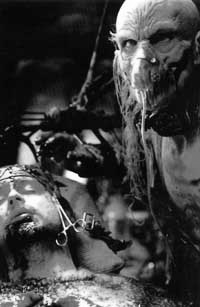 By
taking the 'we're a different movie, don't compare us to the original'
road, the remake team on Texas Chainsaw Massacre is shielded from
the storm that Zombie had to weather. One of the many aspects of criticism
is that of comparison, and when one of the big boys is benched, the art
- both criticism and the art being criticized - suffers. To judge the
remakes without their predecessors on the roster is like trying to determine
how good a boxer is without comparing the slugger to Ali. Without testing
against the best examples around, one can't test at all, and what's worse,
the remake usually claims this privilege above others.
By
taking the 'we're a different movie, don't compare us to the original'
road, the remake team on Texas Chainsaw Massacre is shielded from
the storm that Zombie had to weather. One of the many aspects of criticism
is that of comparison, and when one of the big boys is benched, the art
- both criticism and the art being criticized - suffers. To judge the
remakes without their predecessors on the roster is like trying to determine
how good a boxer is without comparing the slugger to Ali. Without testing
against the best examples around, one can't test at all, and what's worse,
the remake usually claims this privilege above others.
When Zombie stepped up to make House of 1,000 Corpses, he knew the mere fact that his story was about teenagers stumbling upon a crazed rural family would be enough to draw fire for being a Texas Chain Saw Masquerader. This was a risk he took getting his twisted nightmare to the screen, but he knew that while the average filmgoer - and sadly the average film reviewer - would only see the Chain Saw similarities, the real genre fans would see he had equal amounts of Fulci, Argento, and Corman - to name a few of the easy ones - mixed in with his own crazed vision.
With the remake there's no risk for anyone involved save the bagman. The filmmakers can look good scraping and bowing to the glossies about how influential the original was and how much they just want to do it right. The illiterate actors can pretend to care about a movie they've never seen or saw for the first time in preparing for the role, but most remakes are just a license to make a bald faced rip-off, to exhume and reanimate a property that the suits feel has been played out and bled dry. It's one thing when a bunch of khaki-wearing anthropology students solemnly brush off some ancient burial ground, but when it's done strictly for profit and career advancement, it's grave-robbing pure and simple. Just ask Dr. Frankenstein.
Interestingly enough, the main remake I'm looking at here has its roots in grave-robbing. Tobe Hooper's Texas Chain Saw Massacre took much from the oft-told Ed Gein case. Not the least of which was Eddy's compulsion to dig up fresh graves and reassemble what he found into what the radio report in the mind searing opening describes as "a grisly work of art." This whole pivotal aspect of the Sawyer family's behavior was guiltily dropped when Michael Bay and co. renamed the family Hewitt and proceeded to paw at their memory like a passed out virgin at a frat party. Could the reason be this reassembling of a once-respected human corpse into a chair or lampshade or some other possibly commercial or practical application hit a little too close to home for someone ostensibly doing the same thing to a towering classic of the genre?
As bad as it was, at least Tim Burton had the sand to take
the title and a TV guide description and throw just about everything else
out before he lured The Planet of the Apes into his van to look
for his lost puppy. There's nothing wrong with doing a different take
on the same story. There's been more than one good King Kong and
Cape Fear was strong both times around, but the reason for wanting
to do a remake needs to be, as all choices in film or any artistic venture
should be, driven by art - not commerce. Texas Chain Saw wasn't
remade because the story was so strong; it was remade because a whole
lot of people who have never even seen the original know the title, and
nothing makes the monkeys buy tickets like a title they've heard of. 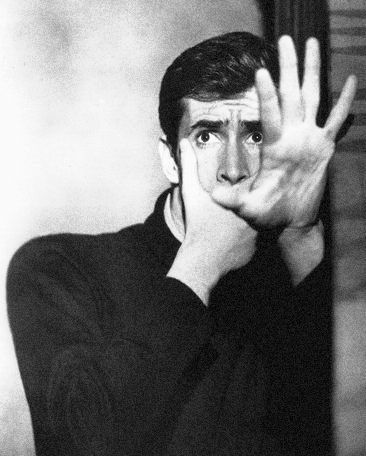
It's not that stories can't be retold. There's only 14 years between Hooper's take on Gein and Hitchcock's, not to mention Bloch's book. What sets Psycho and Texas Chain Saw Massacre apart is what each filmmaker brought to the work. They're both stories about males attempting to take on a feminine role and that darkness lurking miles down the road from stir crazy, amongst other things. But Hitch brings his lifelong fear of being caught as well as the obsessive nature of men; Hooper, on the other hand, brings the youths of the 'counter culture' into contact with some real counter culture, cannibalism. 'Nam-era questions of who belongs where and who gets to make those decisions, along with the blurring of the rural and the urban thanks to the gentrification of Hooper's home state, are all raised.
Material can be reworked to great advantage, but without personal vision or a different take to reinterpret the already-known story there's nothing behind it all. Norman Bates knew that it wasn't enough just to prop up Mother in the corner. He put her in a rocking chair to give her movement and when that wasn't enough, he gave her his voice and eventually his body to bring her back. In some ways, Norman was actually remaking his beloved mother in his own vision. Of course, this was not how she actually acted. Mother couldn't have murdered every woman who checked into the hotel and tempted her son, but it was what Norman thought she would do. In Norman's remake he actually reveals more about who he is, not who his mother was. Leatherface and his family members also take corpses and reinterpret. They reinterpret them into furniture, masks, and those famous gas station ribs.
By the same token, a remake should not suffer a loss of personality just because it comes from a previously mined source. Much of the uproar over Gus Van Sant's remake of Psycho was not so much that he would have the audacity to remake one of the few horror pictures to outrank Texas Chain Saw Massacre, but that he was going back to Hitch's shooting script and restaging it more than remaking it. Surely some of this was played up for the press to get some buzz, as we now know Van Sant didn't restage everything 'faithfully' and certainly looking at the finished project it does fit fairly neatly into his filmography.
Is this to say that Van Sant's remake was the 'right' thing to do? Not exactly, but at least it feels like an attempt to take some very well-known material and rework a few key points to see if the material could transcend ownership by the second-biggest cinematic brand-name of all time. With the Texas Chainsaw Massacre, the immutable parts of the story - Leatherface and his masks, the van, and, of course, the Chainsaw - are set in stone and then 30 years of horror clichés are poured around them. That's missing the point.
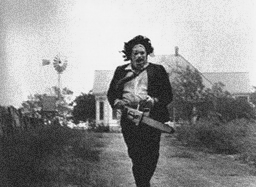 What
made Texas Chain Saw Massacre great was its balls-out assault on
the audience. Hooper couldn't give a damn about how the picture played,
he told the story the way it needed to be told. Did he not care about
making his money back? Of course he did. Did he not want to turn a profit?
Of course he wanted a return, but he knew that if the movie was made cheaply
enough and boldly enough, making the money back wasn't the worry. These
days it's about making the right exit numbers, getting a strong 7- to
10-day box office turnout, and starting a new franchise.
What
made Texas Chain Saw Massacre great was its balls-out assault on
the audience. Hooper couldn't give a damn about how the picture played,
he told the story the way it needed to be told. Did he not care about
making his money back? Of course he did. Did he not want to turn a profit?
Of course he wanted a return, but he knew that if the movie was made cheaply
enough and boldly enough, making the money back wasn't the worry. These
days it's about making the right exit numbers, getting a strong 7- to
10-day box office turnout, and starting a new franchise.
With that attitude, Hooper wouldn't have and couldn't have made the classic that has put butts in seats for decades. What's worse is that Hooper's film, and Texas film commissioner Warren Skaaren's title, is still packing houses for a necromantic circle jerk more disgusting than anything on the screen at your local multiplex. Part of Texas Chain Saw's strength comes from Hooper's gleeful identification with Leatherface. That the idea came from a dark homicidal tug we have all felt once or twice makes us so uncomfortable with the film that it haunts us.
With this remake, however, you have to ask yourself if Hooper could truly
understand this monster that assaults his victims while wearing the faces
of their loved ones to the same depth that those who have remade his masterwork
can.
For more on Tobe Hooper's original classic check out Joe Bob Briggs'
Lesson on
THE
TEXAS CHAINSAW MASSACRE